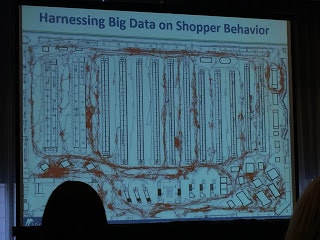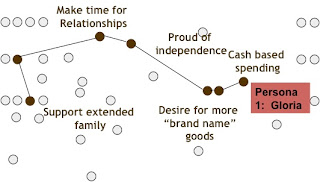Uncovering the Mystery of Ethnography

We'd like to welcome a new guest blogger, April Bell. With over 13 years in the marketing and research field, she has worked with many Fortune 100 companies to help clients develop new products, create winning brand positioning, test advertising and packaging ideas, and better understand consumers. Her experience includes consumer package goods, retail, financial services, energy, technology and agriculture with brands like: Procter & Gamble, Tyson, KAO Brands, TXU, Hewlett Packard, Kellogg's, 7-Eleven and John Deere.April joins us from the The Market Research Event Linked In Group. Her profile can be viewed here. You can also read her blog Qualitative Research Digg here.
 Ethnographic research seems to have a lot of buzz these days and still it's a very mysterious form of research. I receive lots of questions about ethnography so I thought I would spend a few minutes to write a bit about my thoughts on it. The most common questions I get are related to when and why you should conduct ethnography vs. more traditional research '.and of course, how do you communicate learnings effectively.
Ethnographic research seems to have a lot of buzz these days and still it's a very mysterious form of research. I receive lots of questions about ethnography so I thought I would spend a few minutes to write a bit about my thoughts on it. The most common questions I get are related to when and why you should conduct ethnography vs. more traditional research '.and of course, how do you communicate learnings effectively.
So, here's to when and why: With ethnography research, you become a part of your target's real life context. It is probably the most robust form of qualitative research because it is conducted in a respondent's natural environment. Whether it's in their home, their work, their play, or all of the above, you learn from respondents at a much deeper level. Their reactions and behaviors are uninterrupted, unfiltered. It creates a more authentic way to observe human behavior, learn about their emotions on a guttural level. You can see their decision making, and that's powerful, especially when it's through the lens of a clear learning objective.
When conducting ethnographic research, you are dealing with less simulation and more authentic scenarios. When you watch someone choosing where they are going to have dinner that evening, you receive new insight into the decision making process vs. hearing them tell you why they make their decisions (as you typically would in a focus group setting). Because we as humans have our own subconscious filtering process when we recount what we do, we may leave out details or omit certain pieces. The cool thing about ethnography, on the other hand, is that when you live for a few moments in your target's world, you become entrenched into who they are and their decision making process'.thus creating true insight.
However, good ethnography takes time and requires careful observation. While most qualitative research is all about what you hear, ethnography is combining what you hear with what you see. Because consumers have many subconscious behaviors and attitudes that will not be revealed in typical research, ethnography highlights these when carefully observed in respondent's own environment. It reveals the difference between what people say and what they actually do.
Ethnography is ideal when you're wanting to understand decision making and consumer's core experiences. It is also great when you need to explore in-depth behaviors, build customer segments or define usage patterns.
So, what do you do with the insight? If you spend the time to do ethnographic research right, the data you have at the end of a project is overwhelming! This becomes a challenge when reporting. One of the best ways to reveal your discoveries to key stakeholders is to create snapshots (or personas). I believe this is a 2-step process. First, you must develop patterns or trends based on the similar consumer attitudes, characteristics or behaviors observed. Second, you can use these patterns to develop personas, which are archetypes of actual consumers. This allows you to blend your learnings into a more vivid example, complete with real name, photo, personality, motivations, etc. It gives those who didn't experience what you did a more personal encounter.
The attached visuals are an example of building patterns and a persona from some personal ethnographic research (just because it's what I love to do) on one of my excursions in South America. It is based on several women I spent hours (sometimes days) with in Peru.
